#Victorian mourning jewellery
Text


Mourning brooch containing the hair of Anne Brontë, belonging to her sister Charlotte
#Victorian mourning#hair jewelry#hair jewellery#Victorian mourning jewellery#victorian mourning jewelry#anne brontë#charlotte brontë#emily brontë#the brontë sisters
380 notes
·
View notes
Text

mourning jewellery button badges ✨️💀🎩🌿
#illustration#artist on tumblr#dark academia#victorian aesthetic#whOO im working hard on mcm london prep and new items and these are part of all that!!#im v v happy with how they turned out#honestly i want an authentic piece of mourning jewellery so much but this will tide me over 😌
69 notes
·
View notes
Text
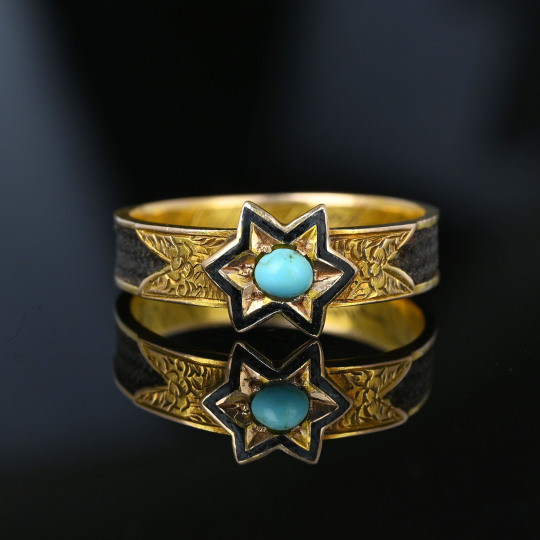
Antique Victorian 14K Gold Turquoise Star Ring Band, Mourning Jewelry
Source - Boylerpf.com
#jewelry#gold#jewellery#antique#vintage#boylerpf#antique jewelry#vintage jewelry#victorian#mourning#mourning jewelry#victorian era#victorian jewelry#19th century#turquoise#star ring#gold rings#ring
23 notes
·
View notes
Note
what DOES make something a mourning piece
I'm so glad you asked!
Firstly, what does NOT automatically designate a piece of Victorian jewellery as an item intended for mourning:
Hairwork or a hair keepsake. Hair was a fashionable jewellery material that could have been used just like any other material, especially from the 1840s or 50s to the 1880s. It was often sentimental, and could have been worn as a keepsake or relic from a loved one, living or dead--it was common, for example, for women to give their husbands watch guards made from their hair--but hairwork items could also be purchased from jewellers, and these would be made from hair that had been purchased from unknown women. Hairwork chains were used because they were fashionable, they were cheaper than gold (especially if they were made at home), and they got the job (holding a watch or pair of glasses) done. Other types of hairwork or hair keepsakes in jewellery--behind glass in pendants, on the backs of brooches--could likewise have been exchanged between sweethearts and do not necessarily indicate a piece of mourning jewellery.
A portrait. This could also be a piece intended for a sweetheart.
The colour black. Jewellery made largely or solely of black material or set with black stones (Whitby jet, "French jet" aka black glass, bog oak, gutta percha, vulcanite &c.) would have been socially appropriate to wear in England during second or half mourning and in the US during any period of mourning, but this doesn't mean that any black item of jewellery was necessarily designed, commissioned, sold, or purchased with the intention that it would be used for mourning. Black was simply a fashionable colour for jewellery, especially after Queen Victoria's mourning for Albert started a bit of a craze for jet.
Skulls, skeletons, coffins, &c. These may be 18th century "memento mori" pieces, which are different in design and intention.
What COULD lead to the conclusion that a piece of Victorian jewellery was intended as a mourning item:
The inclusion of motifs that specifically relate to mourning. Victorian sentimental jewellery (and mourning arts and crafts such as embroidered samplers) used a sort of symbolic language to communicate certain things about the life of the deceased. Common mourning motifs include: oak and acorns, especially with the "nut" missing (the loss of the loved one); birds in flight, birds returning to the nest (rejoining the loved one in Heaven); writing reading "IMO" or "in memory of" or other memorial inscriptions; a buckle or garter (eternal love); forget-me-nots (memory); lily-of-the-valley (rejoining the loved one in Heaven); stalks of wheat (the deceased was old and experienced, "ripe"); cherubs (the deceased was a child); a flower bud (the deceased was a child or young unmarried woman); urns; crosses; hands holding bouquets of flowers; clasped hands (the meeting or near-meeting of one feminine and one masculine hand may indicate a mourning piece for a widow). Some of these motifs were also used in non-mourning jewellery--it's about taking in all of the clews!
Common mourning materials--these were also prescribed by said symbolic language. Seed pearls (tears); ruby, garnets, or red glass (blood and, thus, the pain of loss). Black material in combination with mourning motifs could indicate a mourning piece. Prescriptions for appropriate mourning attire varied confusingly (I mean, even women at the time were confused), but the general pattern in England was: no jewellery at first, any necessary fastenings (buttons, shawl fastenings, belt buckles) to be made solely of jet (or jet lookalike); this period of "full," "close," or "deep" mourning to be followed by "second" mourning, during which jewellery made solely of jet is appropriate (pendants to be worn on strings of jet beads or on black ribbons); then a period of "half" mourning, during which jewellery inclusive of other materials (gold, silver, gemstones) was appropriate as long as the primary stone was jet or a jet lookalike, or black enamel. During the first stages of mourning, black jewellery would often be made of "dead" jet--that is, matte jet without shine or lustre.
Mourning jewellery could be specifically designed and commissioned by wealthy clients, or mass-produced; hand-carved (like Whitby jet had to be) or pressed into moulds (like bog oak or gutta percha). "Generic," mass-produced jewellery could be purchased at magasins de deuil and worn and reworn on the occasion of different deaths through generations, or highly tailored to the individual. Sometimes, components were mass-manufactured separately (for example: a brooch closure, brooch backing, pressed jet-imitation forget-me-nots, pendant backing, gloved hand holding flowers) and then mixed and remixed onto different items of jewellery. So a lack of personalisation does not suggest that something is not mourning jewellery (just like the relic qualities of hair jewellery does not suggest that it is).
51 notes
·
View notes
Text
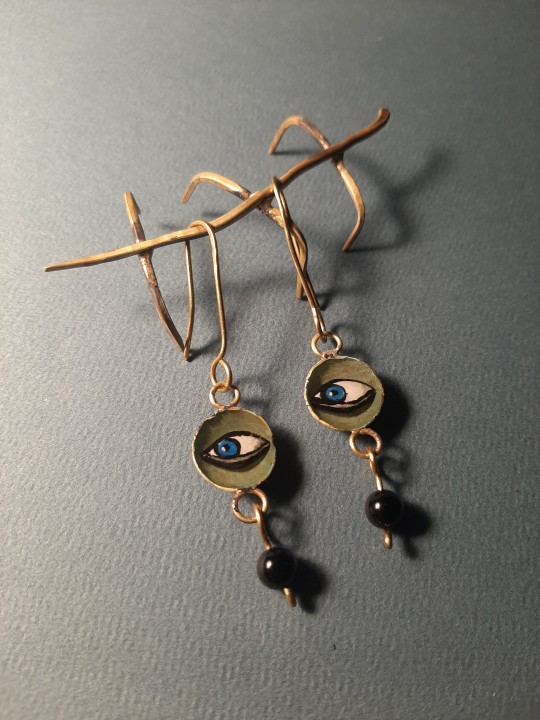
#art#daniel middeke#daniel andreas middeke#artist#contemporary art#jewelry#pearl jewelry#memento mori#mourning jewelry#jewellery#victorian#edwardian
1 note
·
View note
Note
So I had this idea that in Dothraki culture when a person dies their hair is cut off and braided into jewellery for their relatives, similar to Victorian mourning jewellery, and I wanted to know what you thought.
YESSSSSSSSS god u are so big brained anon
There is already such a strong cultural attachment to a persons hair for Dothraki’s, so much so that it’s the greatest shame to cut it off. But when they die it’s seen as keeping a piece of them in remembrance as their soul goes off to the Night Lands, perhaps an anchor to the material world if their spirit ever wishes to return. Grandmothers with the hair of their young grandsons who died in battle weaving it into talismans. Children who lost their mother cutting off a lock of her hair so they can braid it into theirs. Men taking a braid of their deceased wife’s hair and tying it into their belts. Just the cultural implications of a person hair>>>
#asoiaf#hair as an important part of culture is too overlooked#crazy worldbuilding can be done by just one person with access to wikipeada articles about fashions and cultures
63 notes
·
View notes
Note
Grisha wedding/family stuff I thought up because the soldier thing makes me weepy
Some grisha will exchange teeth or other bones. These are people who wear animal bones for God's sake.
Dead soldiers demanding their comrade take off a finger and give the bones to their widowed spouse, siblings exchanging baby teeth on a string around their wrist. Hell maybe the string is woven out of their hair. I know Chinese people make calligraphy brushes out of their baby's first haircut maybe they wove it from parents' and baby's hair. Alongside pictures in lockets they have hair or teeth.
These all have historical basis, hairwork jewelry, mourning jewelry with hair in them, and queen Victoria made jewelry out of her kid's teeth.
I guess cutting their palms and joining their blood together is really hardcore because of the fear of hand injuries.
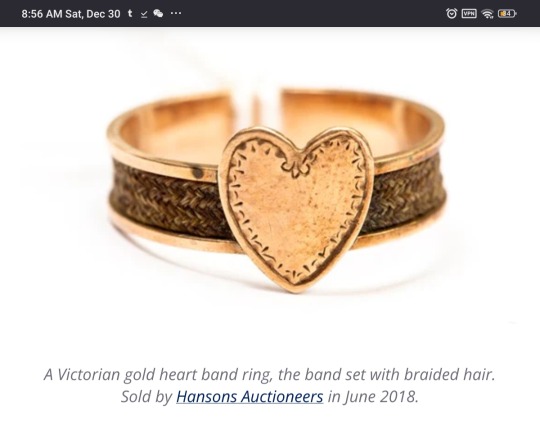


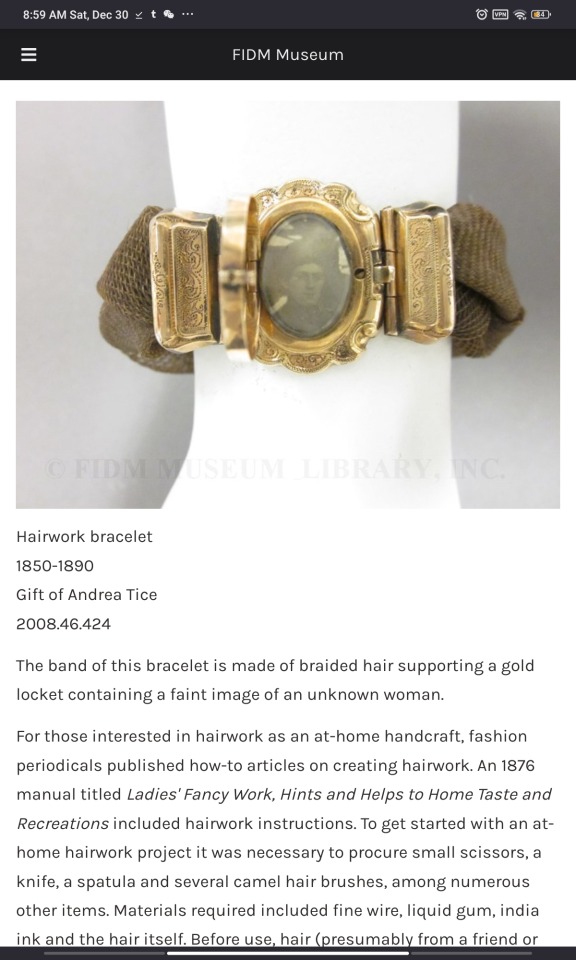
Let Grisha be weird and have strange traditions because persecuted minorities should not have to be perfect to be accepted by mainstream society.
I was saving this ask for later, because I absolutely adore the idea, and I was hoping to come up with more, but I guess I can come back to it in reblogs...
This is exactly my kind of thing- I've been collecting animal bones as a child, burial rites are among my favourite topics and while I hope grandma will stay with us for a long time, I'm looking forward to throwing her around our garden (She insists on cremation and dispersion.).
If Victorians could make jewellery from body parts, why couldn't Grisha? The time setting fits and people used to be less oversensitive about such things.
One of my favourite quotes from Hannibal claims human bones used to be among first materials used for fabrication of musical instruments. Mental image of deceased mother, "singing" to her children this way long after her death keeps haunting me ever since.
Since Grisha apparently aren't limited by strangeness of objects they want to fuse with their own bodies, another thing came to my mind- American Mary has a scene, where the MC transplants an arm from one twin to another and vice versa. Not only I can see this applied to close siblings- kebben anyone?- but why exchange ordinary rings in marriage, when you have a way to fuse in other creature's bodyparts? If Judeo-Christian God created woman from man's rib, why would Grisha need twelve pairs?
note: I need the milk teeth brooch like yesterday! And I don't like gold, so that says something.
#reply#Grishaverse#Shadow and Bone#grishanalyticritical#Grisha#kebben#jewellery#Hannbal (TV series)#American Mary#What if/AU/...
14 notes
·
View notes
Text
Im so so normal about thor weaving a lock of lokis hair into his own im not even thinking about victorian mourning jewellery not even a little
39 notes
·
View notes
Note
Do you think Bucky's favorite color is blue?
i am sadly a bit useless when it comes to basic things like 'favourite colours' so this has taken far more time than it should
while bucky wears blue a lot in his uniforms, he never really chose that.
i think blue is steve's favourite colour (i love his dark blue jacket in tws bc it feels like he is wearing a piece of bucky, almost like Victorian mourning jewellery in a very broad sense). the navy, ofc, as well as the grey-blue of bucky's eyes.
i dont know what i think bucky's favourite colour is, though. maybe a deep, rich green? something about that feels right to me. maybe because i associate him with the hobbit and thus the lush green of the new zeland wilderness you see in the film?
57 notes
·
View notes
Note
best friend what do you think of victorian mourning jewelry
"I find them to be beautiful, and their history intruiging. The tradition of wearing mourning jewellery goes back to at least the Middle Ages when motifs like skulls and crossbones served as a tangible reminder of death. The exhortation memento mori, which literally translates to remember death, urged the wearer to live a moral life.
The popularity of mourning jewellery reached its peak during the Victorian era (1837-1901). Queen Victoria was deeply in love with her husband, Prince Albert, and when he died in 1861, she fell into a long depression. Queen Victoria spent much of the next four decades wearing black crepe dresses and mourning jewellery. She commissioned portraits, memorials, and busts of Prince Albert and other mementoes that were reminders of her deceased spouse.
Overall, mourning jewellery is fascinating, and I feel it would be interesting to make them normalized once more."
#danganronpa#danganronpa korekiyo#danganronpa rp blog#korekiyo#korekiyo shinguji#drv3 korekiyo#danganronpa v3#kiyo#kork
5 notes
·
View notes
Text
okay but i was scrolling through insta (as one sometimes does when they are procrastinating) and found a thing about victorian mourning jewellery made from human hair.
and i would like to propose the angst potential of liam leaving a lock of hair on his desk for albert to find before he burns down the mansion, because he knows how he plans for this to end and he wants to grant his brothers some closure...
bonus angst if sherlock does it too, because while he hopes to end it differently, he cannot guarantee a positive outcome, and he knows that if liam goes, he will too.
#moonieposts#yuumori#moriarty the patriot#yuukoku no moriarty#honestly i imagined mycroft making a bracelet out of sherlock's hair#he wears it under his shirt cuff so he looks proper but can remember his little brother#the locks liam leaves are shared between albert and louis#others in the morigang were offered but they felt those two needed it the most
5 notes
·
View notes
Text
Rating Nobel Dinner outfits
I’m home sick so we’re gonna look at the most specialiest of awards shows, ie the one where a bunch of very intelligent and/or rich and/or influential and/or un/lucky people get to eat a very expensive dinner on camera. I am Swedish and obviously biased but here we go.
Warning for long post so if you’re on your PC press J to skip and if you’re on phone idk suffer or something.
Starting off with the Swedish royal house because idk they’re the hosts?
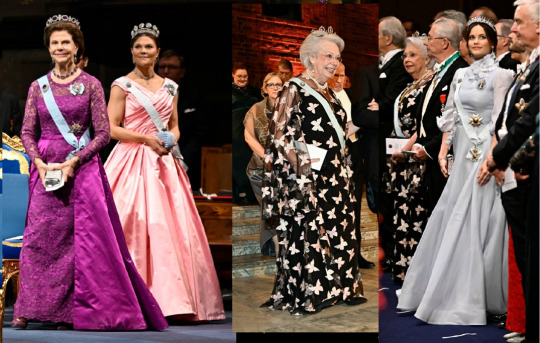
Okay they’re not but whatever.
Fun fact, I once had a teacher who worked in the castle wardrobes and the specifications about who gets to wear what and how and when is out of this world. LEFT TO RIGHT:
QUEEN SILVIA – Best part of this is the colour contrast between the purple and the baby blue. Looks kinda cheap aside from that. I am sure the lace fabric is very high in quality but my immediate reference is always going to be F21 tumblr girlies anno 2013. 4/10
CROWN PRINCESS VICTORIA – Looks like the collective American imagination of what a Crown Princess looks like so it is sort of like reviewing the concept of socks. That said, what is going on with the puckered hem? Queen also seems to have this issue. Come on. 5/10
PRINCESS CHRISTINA – Aspirational grandmother aesthetic. Cute! 6/10
PRINCESS SOFIA – Setting a standard, as it were. The high and decorated collar, the subtle quality of the material and colour, the cut of the skirt. I have some concerns about the end of the sleeves but if this was the minimum bar for royal gala wear I might be tempted by royalism. 7/10
Oh and you may notice a suspicious absence of menswear in this list and that is because those who wear anything but immaculate white tie are intensely rare.
THE NOBEL LAURATES
Ok so again with the white tie cavalcade but I want to give a shout out for laurate in medicine Svante Pääbo who 1) assumed he was gay until he met his wife and colleague Linda Vigilant and fell for her “boyish charms” before 2) proceeding to move in with her and her husband to live in some sort of throuple? Altogether, the bisexual representation we deserve.
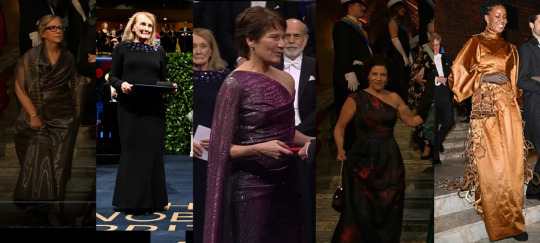
LINDA VIGILANT – They’re a bit difficult to spot but there are DNA spirals on her shawl! Very synyhetic looking but understated colour with some lovely amber jewellery that looks excellent on her. Love the big chunky glasses. 7/10
ANNIE ERNAUX – Laurate in literature. Exactly what I think of when I think of “dignified French authoress”. 5/10
CAROLYN R. BERTOZZI – Laurate in chemistry. Very good use of two-toned fabric and sparkles. The slight pinstripe gives it something to hold onto, even if it doesn’t photograph well. 8/10
BETH PRICE – Partner of Bertozzi. First same-sex Nobel laurate partner. Can’t really see the dress but I am always biased towards black and red two-tone and she looks handsome in it. 6/10
PHAEDRIA MARIE ST. HILAIRE – Partner of Morten Meldal (laurate in chemistry). I haaaate the train. Looked super cheap in motion as well and especially when contrasted with Vigilant’s DNA spirals. 3/10
THE SWEDISH PARTY LEADERS
Head of parliament is Ulf Kristersson and he is a despicable little man, contrasted with the leader of the Liberal party Johan Pehrson, who is a despicable big man. Additionally there is Jimmy Åkesson who is leader of the Sweden Democrats and simply despicable. But he wasn’t invited so at least there is that. Sole representative of the conservatives is thus Ebba Busch:

EBBA BUSCH – Christian Democrat. Some of my friends were really into this but again with the lace fabric… I also think it is very bottom heavy and unflattering. It’s like someone mashed up a wedding dress and a Victorian mourning gown. At least the bodice is flattering. 4/10
ANNIE LÖÖF – Centre party. Obligatory green dress on a redhead. I like that it is deceptively simple, I like the train, I like the use of a visually interesting fabric but maybe it is a bit too much. Wish she would have gone with a statement necklace + more narrow sleeves. 6/10
NOOSHI DADGOSTAR – Leftist party. There is nothing revolutionary about this dress but at least it sits well on her. Next. 3/10
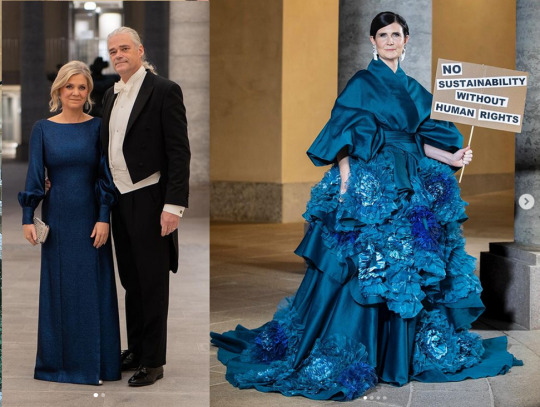
MAGDALENA ANDERSSON – Social Democrat. Perfectly executed simplicity. Gorgeous fabric. Flattering cut. True mother-of-the-country moment. Ulf watch your back because this is a political revenge dress. 9/10
MÄRTA STENEVI – Green party. Not visible here is the ouster shell jewellery which I LOVED. Environmentalism aside this dress fucks and I love it. The smooth upper chest area combined with the fluffy and busy skirt and sleeves? The colours? Playful and attention grabbing and sincere all at the same time. 10/10
OTHERS

RUFUS WAINWRIGHT – Musician. Perhaps the only time Wainwright will out-rockstar Kevin Shields (who is here as partner to the daughter of one of the laurates). Admittedly a bit of a walk over but I like it! 7/10
ELIN KLINGA – Actress. When contrasted with Stenevi this becomes exponentially more horrifying. @ Nobel fashion coverage please stop putting this in front of my eyes. 2/10
WHOEVER THIS IS (member of Samédiggi?) – Excellent use of gákti. Land rights for Sámi/10

PERNILLA MÅNSSON COLT – TV host. Could be the platonic ideal of a black velvet evening gown but I don’t like the fit and I don’t like the fabric. 5/10
JESSIKA GEDIN – TV host. Exemplary queering of the male white tie ensemble. Excellent nails and other details. Could only be improved by being part of a pair. 9/10
CECILIA GRALDE – TV host. Very flattering colour and looks great in motion but genuinely the toned glasses are what makes this look. The MILF of the nation. 8/10
VICTORIA DYRING – TV host. Hair buns! Though looks kinda Star Wars when combined with the wrap collar? Big fan of the well-executed one-massive-sleeve. 7/10
22 notes
·
View notes
Note
To ask a question about something other than moms…What… ARE Victorian mourning codes? And how did you find out about them? Are there any good sources?
Wearing black for some time after the death of a relative was already a convention in England in the Regency, but the common narrative is that Queen Victoria's very long, very public mourning for her husband, Prince Albert, encouraged the increased codification and strictness of mourning codes from the 1860s to the -80s (by the late 90s, stringent and prolonged mourning was occasionally referred to in contemporary writing as a thing of the past; the 1930s is usually given as the last decade when mourning dress was socially codified in England and the U.S.).
Conventions for mourning attire (and visiting, comportment, letter-writing, visitor-receiving, &c.) were laid out in etiquette and housekeeping manuals and magazines of the mid-to-late Victorian era; given the increasing literacy rate throughout England in the 19th century, alongside other economic changes, there was increased demand for works that explicitly explained conventional, "respectable" genteel behavior for those who wanted to emulate it but did not have family history of gentility (many of them merchants, for example).
The relationship between "etiquette," "morality," and class in this time, as well as the relationship between conventions as they are actually lived and as they are written down in etiquette manuals, is debated. What's clear is that prescriptions for mourning the same family member at similar times differ from text to text; these texts also note the personal nature of mourning attire, pointing out that some people follow conventions stringently, while others do much more and still others somewhat less than would be "expected."
So guidelines for mourning attire (and behaviour) differed significantly based on the age and gender of the mourner, their relation to the deceased, the time period and place, and which writer you were consulting. Typically, for widowed women, a period of no less than a year (and up to a year and nine months) of deep mourning is called for, perhaps followed by a period of second mourning and then a period of half mourning, amounting to around 2-3 years in total. For widowers, a year of far less stringent mourning. If the deceased was your child, a year; if a sibling, six months.
Generally, deep mourning consists of black dress covered entirely in black, lustreless crepe; a crepe veil covering the face and descending to the calves on the rare occasions when the widow must leave the house; no jewellery or ornament of any kind, with necessary fastenings (belt and shoe buckles, buttons) being of lustreless jet; no trim except for a deep fold of crepe. The veil might be worn over the face for about three months, after which it would be thrown back over the head to shew the face; or it might cover or reveal the face depending on whether the bereaved were in the mood to talk.
With second mourning, the layer of crepe may be abandoned and black fabrics with a slight lustre may be introduced, as well as jewellery consisting entirely of jet, vulcanite, or other black material; half-mourning introduces lace trim, lavender and grey fabrics, and jewellery including materials other than jet (as long as jet or similar is still the primary material). For men, mourning consists of a black hatband and armband, and perhaps black cravat and waistcoat. This is in England; in many parts of the U.S., mourning codes were less strict, with jet jewellery for example being acceptable immediately after the death of one's husband.
Working class people often followed guidelines for mourning attire to whatever extent they could; certainly they would wear black to funerals, whether this meant renting clothing or buying it "on tick" to be sold again immediately after the funeral, or dyeing their existing clothing black.
I haven't touched on the reasons given for following mourning codes because this is already long! A lot of interesting work has been done with regards to how people during the Victorian era responded to and used codes of mourning--check out my tag on the subject.
Contemporary references:
The art of dressing well (1870), pp. 92-6 (U.S.)
The ladies' book of etiquette, and manual of politeness : a complete handbook for the use of the lady in polite society (1873), pp. 82-3 (U.S.)
Manners of modern society : being a book of etiquette (1875), pp. 83-4 (England)
Cassell's Household Guide vol. 3 (1884), pp. 344-5 (England)
Manners and rules of good society : or, Solecisms to be avoided (1898), p. 230ff (England)
Lancaster History provides references to 19th-century U.S. writing on mourning dress
24 notes
·
View notes
Text

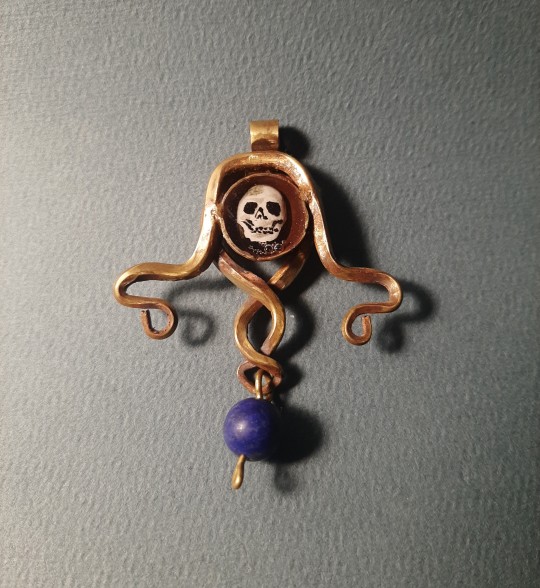
my latest works...inspired by the Victorian mourning jewelry
#art#daniel middeke#mourning jewelry#jewelry#jewellery#pearls#pearl jewelry#skeleton#skull#memento mori#victorian#edwardian#1900s
1 note
·
View note
Text
Love Blooms - Part 8 - From Fear - Teaser


I shamefully wished, in my deepest, most sordid thoughts, that Bo would show up. Windswept and worn from our time apart, but eyes bright and expectant to see me. I ran away, and a small part of me had expected him to follow. Had silently prayed for it. Prayed for him to follow the pattern that we had carved out over our last year together. And I, forever a slave to my own naivete, believed that he would return to me. Could return to me.
“Is there-is there any more ginger?” I glanced around the kitchen, laden with pots and pans - all clean, mind you. Communal living took me back to the years where I studied for my nursing degree, how difficult it seemed to merely exist around others, once you were used to living alone.
“I’m sorry Em, I’ve got to accompany Doctor Phillips in surgery, just about to go in,” Wendy said on her way out of the room, “I trust you can find it in the greenhouse?” She said, clearly rushed off her feet, and I couldn’t help but bemoan the fact that it was because of me that everyone else was being worked to the bone. We are only ever as strong as the weakest among us - and this time I knew that it was me.
“Thick, fibrous green stalks, slender leaves, I checked on them only the other day, they should be ready, just don’t lose the roots, this time eh?” she snickered, her eyes full of the sorrow and pity I had grown to hate, but simultaneously had learnt to be bulletproof against. If I wasn’t being sick I was inwardly mourning the loss of the future me and baby would have, a life without the father - without Bo, not a chance to be loved by him ever again. Because of me. Because of my choices.
Silvery tendrils of grief laced themselves around my neck, tightening at the knowledge that Bo wouldn’t even know he was to be a father, and would likely die in ignorance. The thought constricted my throat to an uncomfortable degree, but I nodded along to Wendy’s instructions, and made my way to the greenhouse. Past the patients in their gowns reclining on the benches, dotted around the gardens. Past the children, the mobile ones frolicking amongst the tall grasses, playing invisible games. Wishing to be anywhere but in such a place of sickness. Our peacetime a long forgotten memory in this disease of a war.
The greenhouse was a gorgeous relic from the Victorian era, shrouded in pale glass and delicate wrought iron curves that were telltale of the time period. When everything from flour, to soap, to coal was rationed, the opulence seemed ostentatious, almost brash, nowadays.
The down right decadence of the architecture was an artefact of more prosperous times. The curved petal-like panes of glass were surrounded by star bright rays pointing outward, and the arched supports were filled with swirls and swoops of metal work reminiscent of jewellery worn by the eponymous Queen herself.
Towering over the smaller planters, running parallel along the length of the building, were trees that reached the full height of the greenhouse, palm leaves that looked so beautifully exotic. Temperatures inside the greenhouse echoed those of the climes it was meant to mimic, the hot, damp interior of the building made of glass caused a dewy sweat to break out on my upper lip. Though I reassured myself that I wouldn’t be in there long, just long enough to retrieve the ginger. Inside lay other plants that weren’t commonly grown in England - pale white orchids and flame like celosia. Despite the hot summer’s weather, it was too risky to plant any of these beautiful buds outside, lest a frost would catch them unawares on a particularly cold night. I spied the unmistakable slender green leaves, curling around in their abundance. Sweetly nestled beneath the soil was my saving grace, a small tincture of relief, however brief it would be.
Having brushed the errant soil off of the beige bulbs of ginger I stood back up, only to have my balance suddenly thrown off. As if the whole world were shuddering beneath my feet. An earthquake in central London? Surely not…My hand came out to catch my fall, sliding along the shiny glass as I bumped clumsily back into the greenhouse door. When I eventually righted myself, I felt off kilter, askew, my balance all but gone. I closed my eyes and went to bring my palm to my chest, to still the tremorous thrumming of my heart, before my arm was caught unawares by something. Something large that was jutting out of my light blue dress, straining under my white apron.
I shuddered a cry - my belly thick and swollen beneath me, almost rippled with a movement, and I felt them. Felt them flutter around inside me, so soft and delicate, ‘twould have put a butterfly's wings to shame. At once, something so beautiful and so wanted, yet the circumstance couldn’t have been further from ideal. My breaths were thick and laboured as they swooned around inside me, and I backed out of the greenhouse, letting the ginger drop to the floor in my haste.
The weather that was a balmy summer’s afternoon upon my entrance to the greenhouse, was now a freezing cold winter’s bite that nipped at my skin, and the way the sleet fell against my clothes soaked me rapidly to the bone. All the patients that were enjoying the warm afternoon were gone. The garden an icy, barren wasteland, the deciduous trees spiky in their emptiness, the buds having retreated into the cold winter’s embrace. Thick, grey clouds prevented barely a sliver of daylight from breaking through. It was so dark, and visibility so bad that I struggled to see anything at all, but I did see him.
The iron gates, curved in their splendour beheld the only figure on the horizon. There he stood, tall as giants, his weather worn clothes sticking to him in the frozen rain. His hair a touch longer than I had seen it before, a tentative curl at the ends that just begged to be spun around my finger. The sharp jaw that I had adored had grown a new friend, thick tufts of darker blond graced his jawline, but it was unmistakably him. Unmistakably Bo. A crash of thunder and a flash of light, and both of our faces illuminated as they tilted skyward - the rain hammered ever harder down on us. Slicing against my sensitive skin, now feeling as if it would split open and bleed if I was to stay outside for even a second longer.
“Emily!” I heard his deep boom cleave through the sheets of rain, his loud footfalls splashing into the puddles that lay between us. The gap between us closing, not in my wildest dreams did I imagine I’d have him back with me…with us. Without hesitation my palm came to my tummy, as if to tell our child what they already knew - he was here - he was home.
15 notes
·
View notes